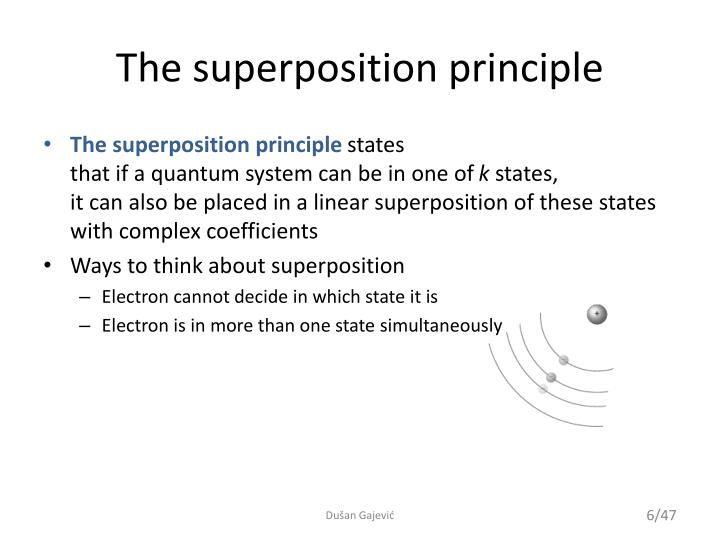


The principle states that the load effects caused by two or more loadings in a linearly elastic structure are equal to the sum of the load effects caused by the individual loading. (In classical Physics it was not universal.) The principle of superposition is another very important principle used in structural analysis. Let us consider the double slit experiment with electrons again. It is now thought to be a universal principle which is exactly true, even though now QM kind of abandons Newton's Laws, the principle of superposition is now even more important than it ever was in classical Physics. The result of this experiment is an interference pattern not predicted by classical mechanics. So the principle of superposition cannot be deduced from Newton's law at all. This equation is a linear equation: the set of solutions is a vector space: if $f$ is one solution and $g$ is another, then $2f+3g$ is also another possible solution.īut this wave situation is much more special than Newton's Law, although Newton's Law is used in proving the wave equation. The action of the given system of forces on rigid body will not be changed if we add to or subtract. (This is sometimes violated for large disturbances see below Nonlinear interactions.) This simple underlying behaviour leads to a number of. Law of superposition - mechanics, Mechanical Engineering. When we write $\vec$$įor the height $f$ of a string above the $x$-axis above the point $x$ at the time $t$. The superposition principle states that when two or more waves overlap in space, the resultant disturbance is equal to the algebraic sum of the individual disturbances. The simplest case is to choose operations that are common to both the Field and the Vector group. The resultant is a Vector Space over a Field.

Make the Vector group and the Real Field talk to each other by defining a few rules. The principle of superposition applied to this problem states that the total change in length of the bar is equal with the sum of the changes in length of the.A Field is a Set and two operations (the set and either of the operations form groups). The net force, or resultant force, means the vector sum of individual forces. A group is your original set S and an operation (say multiplication). The principle of superposition of forces states that a single, net, or resultant force has the same effect as the sum of the individual forces acting on an object. The principle of superposition is a key concept in physics and engineering, particularly in wave theory and quantum mechanics. Organize them as a Group (call it a "Vector" Group). The superposition principle is the basis for treating all problems in wave mechanics including interference and diffraction.Start with a set S, of mathematical objects.The abstract organization goes something as follows: X(t) = F(t) \]Īpplicability of the Principle of Superposition to a system provides a tremendous advantage for handling and solving the equations of motion of oscillatory systems.The principle of superposition arises from the fact that we use Vector spaces to describe Physics. IN dealing with the stress and deformation of continuous media caused by loads in mechanics problems, it is frequently convenient to consider the loads to be.


 0 kommentar(er)
0 kommentar(er)
